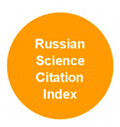Herbert Spencer: the unrecognized father of the theory of demographic transition
Аннотация
It is believed that the central idea of the theory of the demographic transition from an equilibrium of high to an equilibrium of low mortality and fertility was formed and became generally recognized in the middle of the twentieth century. The article shows that this idea was developed by Herbert Spencer a hundred years before, although modern demographic transition theorists never refer to him as their predecessor. The main task of the article is to bring Spencer's arguments to the current debate about the present and the future of fertility, based on the premise that these arguments not only are not outdated, but are even today largely ahead of their time. The article does not deny Spencer's misconceptions about the mechanism of fertility decline in human society, but as to the causes of this decline, the higher level of generalization inherent in Spencer's scientific worldview predetermined an understanding of these causes deeper than that developed by modern theoretical demographers.
Скачивания
Литература
Antonov A., Borisov V. (2011). Lekcii po demografii. Uchebnik dlja vuzov [Lectures on demography. University textbook]. Moscow: Academicheskiy prospect; Alma Mater. 584 p.
Bezanson A. (1922). The early use of the term Industrial Revolution. The Quarterly Journal of Economics, 36 (2), 343-349.
Brinton С. (1933). English Political Thought in the Nineteenth Century. London : Ernest Benn Limited.
Chesnais J.-C. (1986). La transition démographique. Etapes, formes, implications économiques. Etude de séries temporelles (1720-1984) relatives à 67 pays. INED. Travaux et documents. Cahier no 113. PUF. 580 p.
Caldwell J., Schindlmayr T. (2006). Explanations of the fertility crisis in modern societies: A search for commonalities. In Caldwell J. (Ed.), Demographic Transition Theory (pp. 349-386). Springer,
Caldwell J.С. (1976). Toward a restatement of demographic transition theory. Population and Development Review, 2(3-4), 321-366.
Davis K. (1945). The World demographic transition. The Annals of the American Academy of Political and Social science. Vol. 237. World Population in Transition: 1−11
Davis K. (1963). The theory of change and response in modern demographic history. Population Index. 29 (4), 345-366
Davis K. (1986). Low fertility in evolutionary perspective. Population and Development Review, Vol. 12, Supplement: Below-replacement fertility in industrial societies: Causes, consequences, policies, 48-65.
Davis K. (1997). Reproductive institutions and the pressure for population. Population and Development Review, 23(3), 611-624.
Encyclopedia of Sociology (2018). Family Size. Encyclopedia.com. 19 Aug. http://www.encyclopedia.com.
Hodgson D. (1983). Demography as social science and policy science. Population and Development Review, 9 (1), 1-34.
Kirk D. (1996). Demographic transition theory. Population Studies, 50 (3), 361-387.
Landry A. (1909). Les trois théories principales de la population. Scientia.
Landry A. (1933). La révolution démographique. Economic Essays in Honour of Gustav Cassel. October 1933. Frank Cass and Company Limited 1967, 357-368. English translation (1987): Adolphe Landry on the Demographic Revolution: Population and Development Review, 13(4), 731-740.
Landry A. (1934). La révolution démographique. Paris: Recueil Sirey.
Landry A. (1982). La révolution démographique. Études et essais sur les problèmes de la population. Paris: INED.
Levine H. et al. (2017). Temporal trends in sperm count: a systematic review and meta-regression analysis. Human Reproduction Update, 23(6), 646–659.
Malthus T.R. (1998). An Essay on the Principle of Population [London 1798]. Electronic Scholarly Publishing Project. URL: http://www.esp.org/books/malthus/population/malthus.pdf
Montesquieu Ch. (1995). De l’esprit des lois. Paris: Gallimard.
Nitti F. (1894). Population and the social system. London: Sansonnenschein & Co.
Notestein F.W. (1945). Population – the long view. In T. Schultz (Ed.), Food for the World (pp. 37-57). Chicago: University of Chicago Press, 1945.
Parsons Т. (1949). The Structure of Social Action. A Study of Social Theory with Special Reference to a Group of Recent European Writers. The Free Press. Glencoe, Illinois. 817 p.
Spencer H. (1852). A Theory of population, deduced from the general law of animal fertility. The Westminster Review, 57 [New Series, I(II)], 468-501.
Spencer H. (1891a). The nebular hypothesis. Essays: scientific, political, & speculative. Vol. 1. URL: http://www.g,utenberg.org/files/29869/29869-h/29869-h.htm
Spencer H. (1891b). The Principles of Biology. Vol. 2. New York: D. Appleton and Company.
Spencer H. (1898). The Principles of Sociology, vol. 1 New York: D. Appleton and Company.
Spencer H. (1910). The Principles of Biology. Revised and enlarged edition. New York: D. Appleton.
Süssmilch J.P. (1998). L'Ordre divine. Paris, INED.
Turner B.S. (1991). Preface to the new edition. In Parsons Т. (Ed.), The Social System. Routledge.
Turner J.H. (1981) The forgotten theoretical giant: Herbert Spencer's models and principles. Revue européenne des sciences sociales, 19(59), 79-98.
van de Kaa D.J. (1987). Europe’s Second Demographic Transition. Population Bulletin. 42(1). 57 p.
van de Kaa D. J. (1996). Anchored narratives: The story and findings of half a century of research into the determinants of fertility. Population Studies, 50 (3), 389-432.
van de Kaa D. J. (2010). Demographic transitions. In By Zeng Yi (Ed.), Encyclopedia of Life Support Systems (EOLSS). Demography, Vol. 1 (pp. 65-103). Oxford, UK: EOLSS Publishers.
Vilquin É. (2006). Histoire de la pensée démographique jusqu'en 1940. Démographie. Analyse et synthèse. Sous la direction de G. Caselli, J. Vallin et G. Wunsch. Vol. 7, Chapitre 97, 11-54. Paris, INED.
Vishnevsky A. (2014). The demographic revolution is changing the reproductive strategy of Homo sapiens. Demographic Review, English selection: 3-24. URL: https://demreview.hse.ru/article/view/3155/2739
Wolf J. (1912). Der Geburtenrückgang. Die Rationalisierung des Sexuallebens in unserer Zeit. Iena, G. Fisher. 254 p.
























